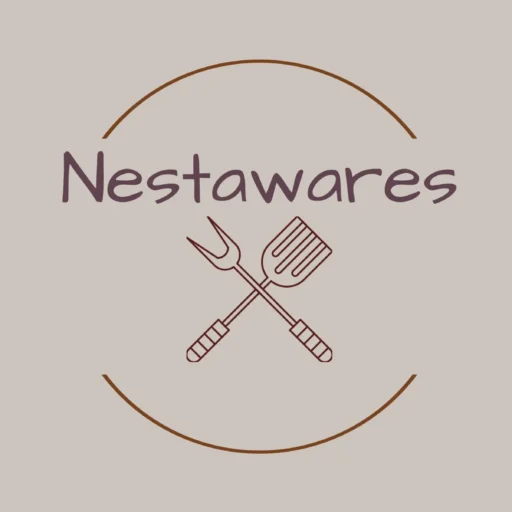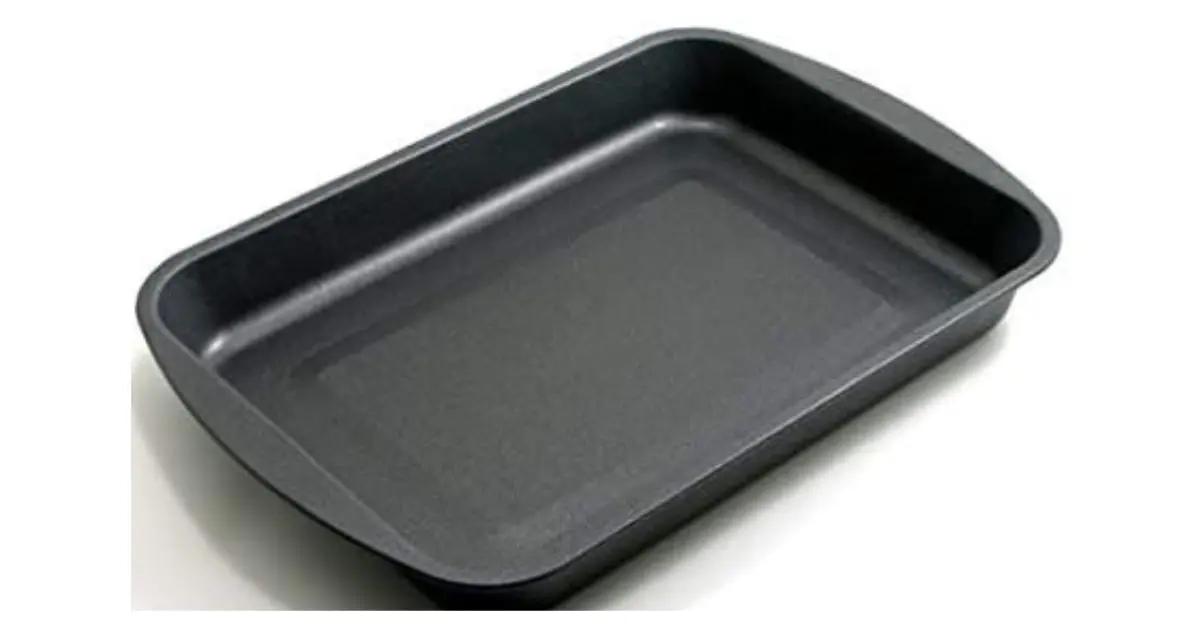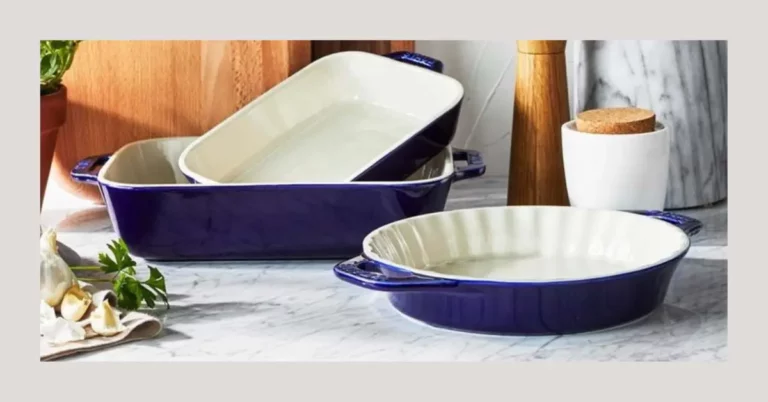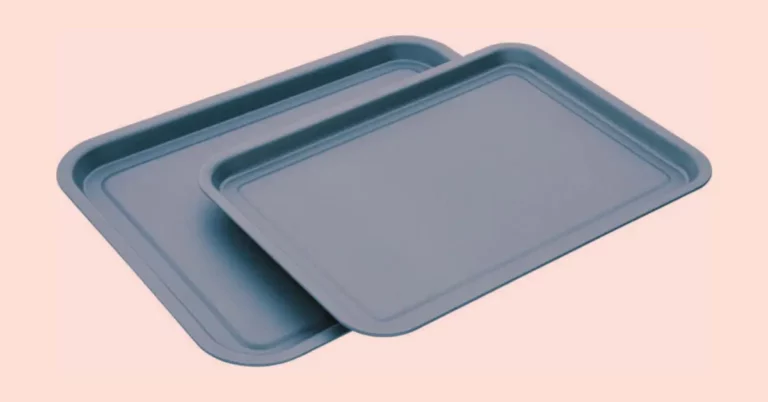Disclosure: As an Amazon associate, I may earn from qualifying purchases
Are you curious about those shiny, non-stick wonders known as Teflon baking pans? If you’ve ever found yourself pondering questions about Teflon coating, its usage, and potential alternatives, you’ve come to the right place.
In this article, we aim to demystify the world of Teflon baking pans by answering frequently asked questions and shedding light on their history, identification, frequency of use, and healthier alternatives. Get ready to dive into the realm of non-stick perfection and discover all there is to know about Teflon pans.
First and foremost, let’s talk about how to recognize pans with Teflon coating. These pans boast a remarkable non-stick surface that ensures effortless food release and easy cleanup. We’ll explore the distinguishing features of Teflon pans, helping you identify them amidst a sea of cookware options, and enabling you to make informed decisions when shopping for your kitchen.
While Teflon baking pans have been widely embraced for their non-stick properties, it’s natural to wonder about their frequency of usage. We’ll discuss the popularity of Teflon pans among home cooks and professional bakers, sharing insights into the reasons behind their widespread adoption.
From everyday cooking to special occasions, Teflon pans have become kitchen essentials for many, and we’ll explore the reasons behind their enduring appeal. And also, their eventual downfall.
Considering health and safety concerns, I have also answered some questions of healthier alternatives to Teflon baking pans. I understand the importance of making informed choices for your well-being, and have attempted to provide you with a range of options that maintain the convenience of non-stick cooking while prioritizing safety and environmental sustainability.
Let’s get started!
In this article, we aim to demystify the world of Teflon baking pans by answering frequently asked questions and shedding light on their history, identification, frequency of use, and healthier alternatives. Get ready to dive into the realm of non-stick perfection and discover all there is to know about Teflon pans.
First and foremost, let’s talk about how to recognize pans with Teflon coating. These pans boast a remarkable non-stick surface that ensures effortless food release and easy cleanup. We’ll explore the distinguishing features of Teflon pans, helping you identify them amidst a sea of cookware options, and enabling you to make informed decisions when shopping for your kitchen.
While Teflon baking pans have been widely embraced for their non-stick properties, it’s natural to wonder about their frequency of usage. We’ll discuss the popularity of Teflon pans among home cooks and professional bakers, sharing insights into the reasons behind their widespread adoption.
From everyday cooking to special occasions, Teflon pans have become kitchen essentials for many, and we’ll explore the reasons behind their enduring appeal. And also, their eventual downfall.
Considering health and safety concerns, I have also answered some questions of healthier alternatives to Teflon baking pans. I understand the importance of making informed choices for your well-being, and have attempted to provide you with a range of options that maintain the convenience of non-stick cooking while prioritizing safety and environmental sustainability.
Let’s get started!
Frequently Asked Questions
Do baking pans have Teflon?
Some baking pans may have a Teflon coating, but not all. Teflon is a brand name for a type of non-stick coating made with polytetrafluoroethylene (PTFE).
While many non-stick baking pans use PTFE coatings, not all of them are branded as Teflon.
Some baking pans may use other types of non-stick coatings, such as ceramic or silicone-based coatings. Be sure to read the manufacturer’s instructions and care guidelines for any baking pan to ensure that it is safe to use and maintain.
While many non-stick baking pans use PTFE coatings, not all of them are branded as Teflon.
Some baking pans may use other types of non-stick coatings, such as ceramic or silicone-based coatings. Be sure to read the manufacturer’s instructions and care guidelines for any baking pan to ensure that it is safe to use and maintain.
How can you tell if a pan is Teflon?
A Teflon pan will have a smooth and non-porous surface that feels like plastic. You may also be able to see a slightly glossy or reflective surface.
Some pans may also have the word “Teflon” or a logo indicating that it is coated with it.
But not all non-stick pans are coated with it, as there are other types of non-stick coatings available.
Some pans may also have the word “Teflon” or a logo indicating that it is coated with it.
But not all non-stick pans are coated with it, as there are other types of non-stick coatings available.
Are Teflon sheets safe for baking?
Teflon sheets are generally safe for baking, as long as they are used correctly. But remember that it can also release toxic fumes if it is heated above a certain temperature (around 500°F or 260°C).
This can happen if the sheet is left in the oven for too long, or if it is exposed to a direct flame. It is also important to make sure that the sheet is not scratched or damaged, as this can cause it to release harmful chemicals.
Follow the instructions and use Teflon sheets safely and responsibly, they can be a useful tool for baking.
If you have concerns about the safety of non-stick materials, you may wish to consider alternative options such as parchment paper or silicone baking mats.
This can happen if the sheet is left in the oven for too long, or if it is exposed to a direct flame. It is also important to make sure that the sheet is not scratched or damaged, as this can cause it to release harmful chemicals.
Follow the instructions and use Teflon sheets safely and responsibly, they can be a useful tool for baking.
If you have concerns about the safety of non-stick materials, you may wish to consider alternative options such as parchment paper or silicone baking mats.
What is the coating on baking pans?
The coating on baking pans can vary, but some common types of coating include:
- Non-stick coating: This is a popular coating for baking pans that is usually made from a material like Teflon or other similar materials. It helps prevent food from sticking to the pan, making it easier to remove the baked goods.
- Ceramic coating: This is a newer type of coating that is becoming more popular. It is made from a ceramic material and is usually free from PFOA and PTFE. It provides a non-stick surface for baking and is generally considered to be safe.
- Silicone coating: Some baking pans are coated with silicone, which can help prevent food from sticking to the pan. Silicone is generally considered to be safe for cooking and baking.
- Anodized coating: This type of coating is usually found on aluminum pans. It helps to prevent corrosion and provides a non-stick surface for baking.
Are pans made with Teflon anymore?
Yes, pans made with Teflon are still available in the market. Teflon is a brand name for a type of non-stick coating that is applied to cookware to prevent food from sticking.
Although, some companies now use alternative non-stick coatings such as ceramic or diamond-infused coatings due to concerns about the safety of PTFE.
It is always a good idea to read the labels carefully and research the safety of the coatings used in cookware before purchasing.
Although, some companies now use alternative non-stick coatings such as ceramic or diamond-infused coatings due to concerns about the safety of PTFE.
It is always a good idea to read the labels carefully and research the safety of the coatings used in cookware before purchasing.
Why do chefs not use Teflon?
Chefs may avoid using Teflon for a few reasons. Firstly, Teflon-coated pans can release toxic fumes when overheated, which can be harmful to humans and potentially deadly to birds.
The coatings can also wear off over time, exposing the underlying metal and potentially contaminating food.
Finally, they are generally not as durable as other types of cookware and may need to be replaced more frequently. As a result, many chefs prefer to use alternative materials like stainless steel or cast iron for their cookware.
The coatings can also wear off over time, exposing the underlying metal and potentially contaminating food.
Finally, they are generally not as durable as other types of cookware and may need to be replaced more frequently. As a result, many chefs prefer to use alternative materials like stainless steel or cast iron for their cookware.
Why is Teflon still legal?
Teflon, also known as PTFE, is still legal because it has many useful applications in industries such as manufacturing, engineering, and medical fields.
While there have been concerns about the potential health effects of PTFE and PFOA (a chemical used in the production of PTFE), the use of PFOA has been largely phased out in the production of PTFE.
The U.S. Environmental Protection Agency (EPA) regulates the use of PFOA and has set guidelines for safe levels in drinking water. It is noteworthy that the safety of Teflon and its associated chemicals continues to be a topic of debate and ongoing research.
While there have been concerns about the potential health effects of PTFE and PFOA (a chemical used in the production of PTFE), the use of PFOA has been largely phased out in the production of PTFE.
The U.S. Environmental Protection Agency (EPA) regulates the use of PFOA and has set guidelines for safe levels in drinking water. It is noteworthy that the safety of Teflon and its associated chemicals continues to be a topic of debate and ongoing research.
What are the healthiest pans to cook with?
There are several types of pans that are considered healthy to cook with:
- Stainless steel: Stainless steel pans are non-reactive and do not leach chemicals or flavors into the food. They are also durable and easy to clean.
- Cast iron: These pans are also non-reactive and can add iron to the diet, which is beneficial for some people. They are durable and retain heat well, making them great for searing and baking.
- Ceramic: Pans made from natural materials include those of ceramic and do not contain harmful chemicals. They are also non-reactive and can retain heat well.
- Glass: These are non-reactive as well and do not contain any chemicals. They are also easy to clean and can be used for baking and roasting.
- Carbon steel: Pans constructed from carbon steel are durable and can retain heat well. They also do not contain any harmful chemicals and are a good alternative to Teflon-coated pans.
When should you throw out a Teflon pan?
Teflon pans should be thrown out when they are scratched, pitted, or the nonstick coating is flaking off. Once the coating is compromised, it can release harmful chemicals, and the pan should not be used for cooking anymore.
It is recommended to replace these pans every 3-5 years, depending on usage and care.
It is recommended to replace these pans every 3-5 years, depending on usage and care.
What is the safest alternative to Teflon pans?
There are several alternatives to Teflon pans that are considered safe for cooking:
Having said that, it is also wise to remember that no cookware is completely risk-free, and it’s important to use them correctly and follow manufacturer’s instructions to ensure their safety.
- Ceramic-coated pans: These are made of a ceramic material that is free of PTFE and PFOA, making them a safe alternative to Teflon.
- Stainless steel pans: These are durable, long-lasting, and do not contain any harmful chemicals.
- Cast iron pans: These are a traditional and safe option that can also help add iron to your diet.
- Anodized aluminum pans: These are treated with a non-reactive coating that is safe for cooking and does not leach into food.
Having said that, it is also wise to remember that no cookware is completely risk-free, and it’s important to use them correctly and follow manufacturer’s instructions to ensure their safety.
What is the safest material to bake with?
There are several safe materials to bake with. Some options include:
- Ceramic: Ceramic is an excellent material for baking, as it is non-reactive and does not contain harmful chemicals. Ceramic baking dishes are multi-functional and can be used for both sweet and savory dishes.
- Glass: Baking dishes made of glass are also a safe option for baking. They are also non-reactive and do not contain any toxic substances.
- Stainless Steel: This is also a safe and sturdy material for baking. It is non-reactive as well.
- Cast Iron: Another safe option for baking, cast iron is robust and retains heat well, making it perfect for baking bread, cakes, and other dishes.




